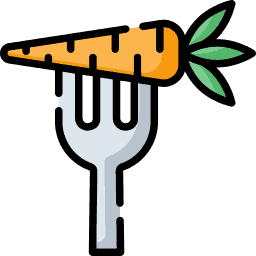Every parent longs to witness their child’s first meal.
If we’re well-prepared, the process of exploring food can be a magical moment between our child and us. While there’s plenty of information out there, the one person who will guide you through this adventure is your baby. They’ll lead the way and you’ll follow.
When is the right time for solid foods? We have collected all the necessary information to take the thinking out of it and make starting your baby on solids stress-free and fun.
Key Takeaways
- Wait until 4-6 months before introducing solid foods to ensure baby’s safety and proper nutrient intake.
- Look for signs of readiness, such as sitting up with support, increased neck control, and interest in food.
- Gradually introduce a variety of pureed and soft foods, starting with fruits and vegetables and moving on to meats and allergenic foods.
- Continue breastfeeding or bottle-feeding alongside solid foods, adjusting feeding frequency and amounts as your baby grows.
Why Wait Before Starting Baby on Solids?

You should wait until about the four- to six-month mark before introducing solid food into a baby’s diet and only breastfeed or use baby formula before that (1).
While some children show signs of readiness earlier, starting a baby on solids before the fourth month postpartum has been shown to pose a risk of particles going down the airway, causing aspiration.
It can also increase the risk of obesity, and prevent the baby from receiving the right amount of nutrients and calories.
But deciding when to start is a delicate balancing act. You don’t want to start too early, but you also shouldn’t start too late. Studies have shown that starting too late may cause iron deficiency, delay oral motor function, and slow the baby’s growth (2).
The wisest thing to do to avoid stress and anxiety is to wait until the sixth month and look for signs that the baby has developed enough to transition to a different meal plan.
Signs Baby Is Ready for Solids

At about six months old, a baby starts showing signs of being ready for solid foods.
Here are the cues to look for:
- Sitting up: Your baby should be able to sit up straight with a bit of support.
- Increased neck control: This is the key to preventing choking.
- Diminished tongue-thrust reflex: No more pushing food out of their mouths when offered, meaning the baby is learning to control the tongue-thrust reflex.
- Responsive lips: Your baby closes lips around the spoon when fed puree and keeps it in their mouth.
- Interest in food: They try to take a piece of finger food and bring it to their mouth when you give it to them.
There are plenty of myths about signs of readiness that can give first-time moms a headache. Here’s the reality: Just because the baby is watching you eat, it doesn’t mean that they’re ready for solids.
We’re simply the baby’s closest reference to the human experience, and they have no choice but to be amazed by everything we do.
Pro Tip
Which Solids Should Baby Start First?

While there isn’t a set order, the most natural strategy is beginning with thin, runny or pureed food. Then you’ll move on to more textured options and finally introduce them to solid foods.
Once the baby is in the mood to explore, and all of the cardinal signs are in check, you’re both ready to start your discovery.
So you don’t hurt your baby’s gums, pick bananas, peaches, sweet potatoes, carrots, and boneless meat as a base. Anything soft will do. All prepared food — most of it has to be at this stage — should be tender.
Keep It Simple
Wheat-based meals should only have one ingredient and always be mixed with water, mom’s milk, or formula.
Start with tiny bites of only one type of food, and, as you follow their cues, increase the amount. Just make sure you’re always supervising them, as at this age, there’s still a chance of choking.
Starting Solids: A Month-by-Month Schedule

Family mealtimes and quiet times are both great occasions to start. You can also use this moment as an opportunity to begin a ritual of washing the baby’s hands before placing them in their high chair.
It may sound like a lot, making sure iron-rich foods and colorful fruit and vegetables are present in each day’s menu. You’ll also be introducing meat and moving from puree to more textured food at the appropriate moment. Still, it doesn’t have to be complicated.
Here are some meal plans recommended for each developmental stage.
Introducing Allergenic Foods

You might think avoiding foods like peanut products, fish, wheat, eggs, and soy is a good idea when introducing solids to a baby because of their commonly known allergenic nature. The American Academy of Allergy Asthma and Immunology (AAAAI) says differently.
Research shows that including such products in a baby’s diet — specifically between the ages of 4 and 6 months — can be beneficial for the prevention of any food allergies of that nature.
The trick to easing the products into the baby’s diet (while also being careful not to attack their immunological defenses) is, as imagined, by doing it gradually.
Traditional and accessible foods should be introduced at first (think cereal, meats, pureed veggies, and fruit) — then, following the child’s responses, include one or two allergenic products.
Be Safe
Although some babies do need several safety measures when it comes to potential allergies, there are many products designed specifically to introduce allergens to a child’s immune system. These products might come in the form of finger foods or stir-in powders that contain a blend of allergenic protein.
The following are indicators of potential allergies (8).
- The baby has close direct relatives with food allergies (a sibling with a peanut allergy).
- Any levels of eczema (from moderate to severe) that persist after treatment.
- Any food allergies already previously detected on the baby — or a positive result for an allergy test.
Signs of a Food Allergy
It’s usually during this period of development that most allergies get identified. Commonly, babies tend to be allergic to the same food groups as their parents. Or they may develop allergies that their parents don’t have.
In infants, signs show up shortly after consuming the food, and the foods most associated with allergic reactions are milk, eggs, and peanuts (9).
The most common signs of a food allergy to look out for are:
- Swelling of the lip, tongue, or face.
- Vomiting or diarrhea.
- Difficulty breathing.
- Coughing and wheezing.
- Hives or welts.
- Rashes and flushed skin.
- A child who starts scratching their mouth.
You must pay attention to allergic reactions. In cases of swelling, severe vomiting, or difficulty breathing after eating, call an emergency number immediately. In less alarming cases, such as a rash or redness, inform your general practitioner or your child’s pediatrician.
Balancing Solids With Breastfeeding or Bottle-Feeding

According to The American Academy of Pediatrics and contrary to what it may seem, the introduction of solids shouldn’t be synonymous with the end of breastfeeding or bottle-feeding. The gradual inclusion of food intake is a part of the child’s maturity development, and it’s essential to increase their autonomy.
The gradual introduction of solids is especially beneficial for both the parent and the child — that is, considering how a baby’s independence also means less need for constant care.
During the baby’s first six months, specialists recommend breastfeeding as the only source of nutrients. The same applies for the subsequent six months as well, with the gradual addition of solids (10).
Iron-fortified solids and cereal work well when paired with breast milk, but the following specifics might help you through the process:
- 0 to 4 months: Stick to exclusively breast milk or formula. You can expect your baby to drink 2 to 4 ounces, and you’ll feed them whenever they appear hungry.
- 4 to 6 months: You’re still sticking to breast milk or formula. Your baby will need anywhere from 6 to 10 feeding per day, and will likely want 3 to 6 ounces per feeding.
- 6 to 7 months: Most recommendations are that a daily intake of solids is not necessary in the beginning, making it an “every few days” frequency. Continue with breast milk or formula — 5 to 9 feedings per day at 4 to 6 ounces per feeding.
- 7 to 9 months: According to the expressed interest by the baby, solids should be added daily. A maximum of two meals a day is the recommended amount, and if a parent is considering adding juice, it’s best when diluted with water and no more than three to four ounces a day. Breast milk or formula should be given 5 to 8 times per day, generally at 4 to 6 ounces each time.
- 9 to 12 months: Solids should increase and babies should start feeding themselves with their solid intake. By their first birthday, they should even be ready to start drinking cow’s milk (11). Until then, expect 4 to 6 feedings of breast milk or formula per day, at 4 to 8 ounces each feeding.
FAQs

When we’re dealing with babies, nothing is guaranteed.
Find out what happens if there’s a hitch in the process and what you need to know.
Other Tips for Feeding Babies Solids

As your journey into the world of solids begins, things can get quite messy — literally.
That’s why feeding the baby with a spoon will not only minimize your cleaning time but also help your baby start learning about the way they’ll be eating when they grow older.
For extra attention, you can give the baby another spoon to hold in their other hand. Bringing a spoonful of every first solid food to the baby’s mouth, and being there with him for the taste (approval sounds!) can build a magical experience.
Start by introducing solids at one meal a day, then slowly work your way up. The morning is an excellent time to start since the baby is often hungriest at that time.
While your baby is by now old enough to hold their head and neck still, there’s still some risk of choking. To avoid choking, bear in mind these tips:
- No bottled solids: Don’t give oats or solids to your child in a milk bottle.
- Soft is safe: Always make sure that food is soft, chopped into small pieces, and easy to swallow.
- Avoid unsafe foods: Don’t offer the baby nuts, popcorn, candy, and hard foods that you can not introduce safely.
- Keep baby stable: Keep the child in the chair sitting upright with the safety straps on to help keep them stable.
Also, keep a no-expectations mindset for the first time introducing a portion of solid food. Pushing away or entirely ignoring what’s in the spoon are normal reactions.
Food For Thought

Moving from an exclusive breast milk or formula diet to a solids-based one is a long process.
It’s also a fascinating new phase for your child.
Every month, new and different foods are needed, so it’s a good idea to go back to this guide whenever it becomes overwhelming.
And remember, you were once just as tiny as your baby, and you had no teeth to help you out. Be patient and stay calm, knowing that in their own time, your baby will become a fully grown-up eater.
















